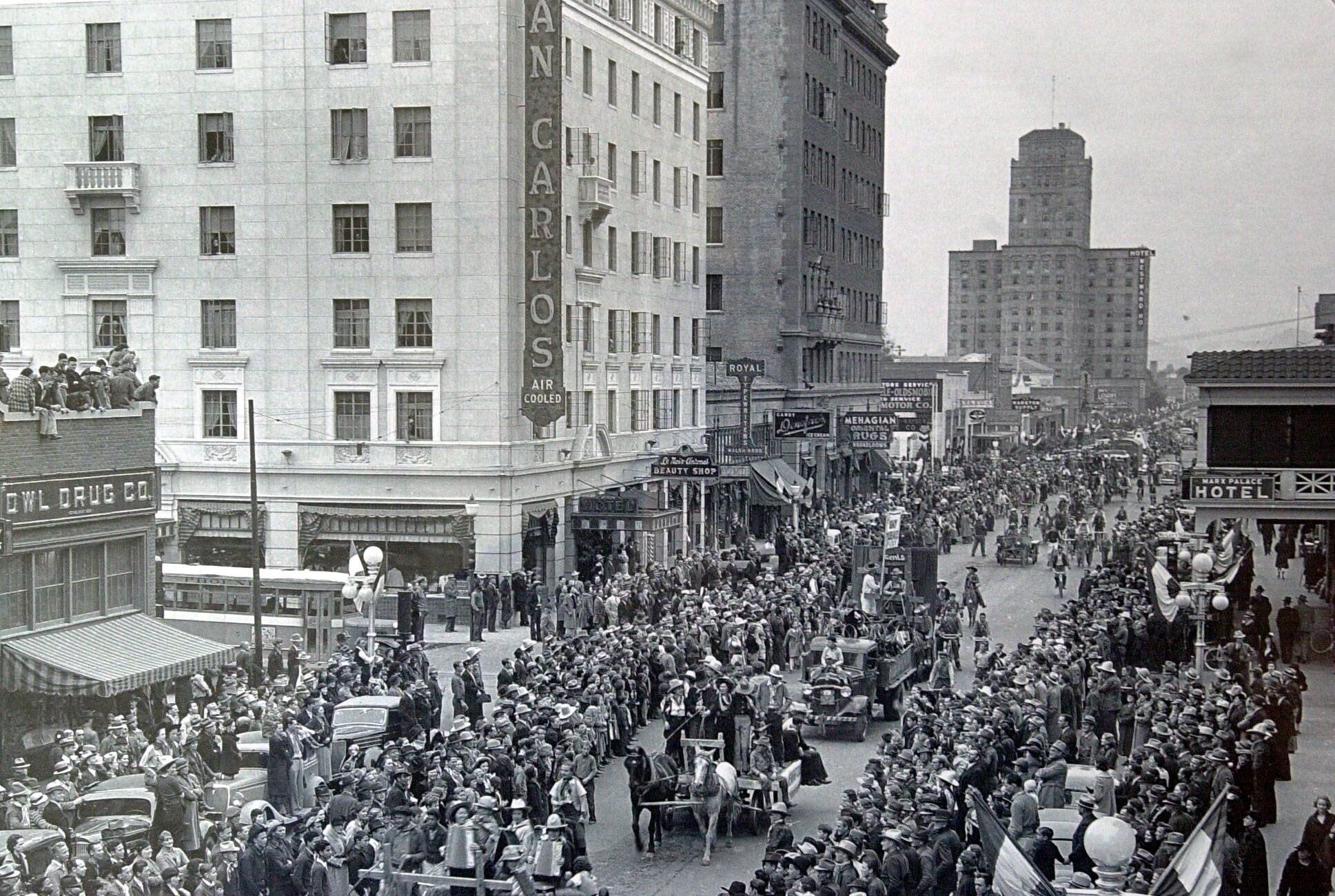Search results
Jul 12, 2019 · Her death from a drug overdose in 1962 at age 36 is still the stuff of legend. Jane Fonda, the actress daughter of Hollywood royalty Henry Fonda, has won two Oscars. But she is equally famous (or infamous) for her political activism during the civil rights era and the Vietnam War. Joan Baez. Cher. Dorothy Dandridge.
- Abigail Adams, Elizabeth Cady Stanton, Sojourner Truth
- Suffrage Movement, 19th Amendment
- Rosa Parks, Civil Rights, Equal Pay
- Title Ix, Battle of The Sexes
- Sandra Day O'Connor, Sally Ride
- Nancy Pelosi, Hillary Clinton, Kamala Harris
- Sources
March 31, 1776: In a letter to her husband, Founding Father John Adams, future first lady Abigail Adams makes a plea to him and the Continental Congressto “remember the ladies and be more generous and favorable to them than your ancestors. Do not put such unlimited power into the hands of the husbands. Remember, all men would be tyrants if they cou...
May 15, 1869: Susan B. Anthony and Elizabeth Cady Stanton found the National Woman Suffrage Association, which coordinated the national suffrage movement. In 1890, the group teamed with the American Woman Suffrage Association to form the National American Woman Suffrage Association. October 16, 1916:Margaret Sanger opens the first birth control cli...
Dec. 1, 1955: Black seamstress Rosa Parks refuses to give up her seat to a white man on a bus in Montgomery, Ala. The move helps launch the civil rights movement. May 9, 1960: The Food and Drug Administration (FDA) approves the first commercially produced birth control pill in the world, allowing women to control when and if they have children. Mar...
June 23, 1972: Title IX of the Education Amendments is signed into law by President Richard Nixon. It states “No person in the United States shall, on the basis of sex, be excluded from participation in, be denied the benefits of, or be subjected to discrimination under any education program or activity receiving Federal financial assistance." Jan....
July 7, 1981: Sandra Day O’Connor is sworn in by President Ronald Reaganas the first woman to serve on the U.S. Supreme Court. She retires in 2006, after serving for 24 years. June 18 1983: Flying on the Space Shuttle Challenger, Sally Ridebecomes the first American woman in space. July 12, 1984: Democratic presidential nominee Walter Mondale names...
Jan. 4, 2007: U.S. Rep. Nancy Pelosi (D-Calif.) becomesthe first female speaker of the House. In 2019, she reclaims the title, becoming the first lawmaker to hold the office two times in more than 50 years. Jan. 24, 2013: The U.S. military removes a ban against women serving in combat positions. July 26, 2016: Hillary Clinton becomes the first woma...
Timeline of Legal History of Women in the United States, National Women’s History Alliance Seneca Falls Convention, Library of Congress Sojourner Truth’s "Ain’t I a Woman?” Sojourner Truth Memorial Woman Suffrage, National Geographic Society Suffragists Unite: National American Woman Suffrage Association, National Women’s History Museum A record nu...
- Women in the Early to Mid-20th Century (1900-1960): Further Reading.
- Women in the Early to Mid-20th Century (1900-1960): An Overview.
- Women in the Civil War.
- Women in the Bible.
Oct 9, 2020 · Summary. In late 19th- and early 20th-century America, a new image of womanhood emerged that began to shape public views and understandings of women’s role in society. Identified by contemporaries as a Gibson Girl, a suffragist, a Progressive reformer, a bohemian feminist, a college girl, a bicyclist, a flapper, a working-class militant, or a ...
News about Paris Olympics, gold medals, Americans
News about 2024 Summer Olympics, Simone Biles, Team USA
Also in the news
- Women’s Rights Movement Begins. The campaign for women’s suffrage began in earnest in the decades before the Civil War. During the 1820s and '30s, most states had extended the franchise to all white men, regardless of how much money or property they had.
- Seneca Falls Convention. In 1848, a group of abolitionist activists—mostly women, but some men—gathered in Seneca Falls, New York to discuss the problem of women’s rights.
- Civil War and Civil Rights. During the 1850s, the women’s rights movement gathered steam, but lost momentum when the Civil War began. Almost immediately after the war ended, the 14th Amendment and the 15th Amendment to the Constitution raised familiar questions of suffrage and citizenship.
- The Progressive Campaign for Suffrage 14 14 Images. This animosity eventually faded, and in 1890 the two groups merged to form the National American Woman Suffrage Association.
Mar 1, 2008 · 3. 1920: Women in the U.S. are given the right to vote. On August 18, 1920, the Nineteenth Amendment of the Constitution was ratified, guaranteeing all American women the right to vote. It was a ...
People also ask
How were women depicted in the early 20th century?
Why was women important in the 20th century?
Who were the major women writers of the 20th century?
What was the New Woman in the 1890s & 1900s?
Doria Shafik. Doria Shafik catalyzed a women’s rights movement in Egypt when in 1951 she, alongside 1,500 women, stormed parliament demanding full political rights, pay equality and reforms to personal status laws. These efforts, along with countless others to come, helped pave the way to women’s right to vote in 1956. share.


